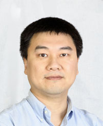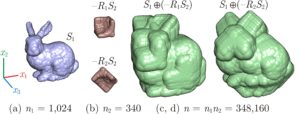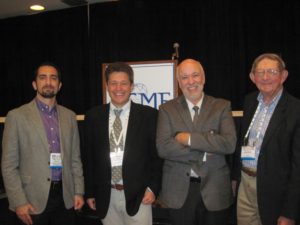Friday, November 11 • 2:30 PM – UTEB, Rm. 175
Reconfigurable Plasmonics and Metamaterials
 Yongming Liu, Assistant Professor
Yongming Liu, Assistant Professor
Department of Mechanical and Industrial Engineering
Department of Electrical and Computer Engineering
Northeastern University, Boston, USA
Email: y.liu@neu.edu;
Group Website: http://www.northeastern.edu/liulab
Abstract: Plasmonics has become a very important branch in nano optics. It allows us to concentrate, guide, and manipulate light at the deep subwavelength scale, promising enhanced light-matter interaction, next-generation optical circuits, sub-diffraction-limited imaging, and ultrasensitive biomedical detection [1-3]. Furthermore, the assembly of judiciously designed metallic structures can be used to construct metamaterials and metasurfaces with exotic properties and functionalities, including anomalous refraction/reflection, strong chirality and invisibility cloak [4,5]. There is a pressing need of tunability and reconfigurability for plasmonics and metamaterials, in order to perform distinctive functionalities and miniaturize the device footprint. In this talk, I will present our recent work in reconfigurable plasmonics and metamateirals. First, I will discuss the first demonstration of reconfigurable plasmonic lenses operating in microfluidic environment, which can dynamically diverge, collimate and focus surface plasmons [6]. Second, I will present a novel graphene metasurface to fully control the phase and amplitude of infrared light with very high efficiency. It manifests broad applications in beam steering, biochemical sensing and adaptive optics in the crucial infrared wavelength range [7]. Finally, I will discuss origami-based, dual-band chiral metasurfaces at microwave frequencies. The flexibility in folding the metasurface provides another degree of freedom for geometry control in the third dimension, which induces strong chirality from the initial, 2D achiral structure [8]. These results open up a new avenue towards lightweight reconfigurable metadevices.
Biographical Sketch: Dr. Yongmin Liu obtained his Ph.D. from the University of California, Berkeley in 2009. He joined the faculty of Northeastern University at Boston in fall 2012 with a joint appointment in the Department of Mechanical & Industrial Engineering and the Department of Electrical & Computer Engineering. Dr. Liu’s research interests include nano optics, nanoscale materials and engineering, plasmonics, metamaterials, biophotonics, and nano optomechanics. He has authored and co-authored over 50 journal papers, including Science, Nature, Nature Nanotechnology, Nature Communications, Physical Review Letters and Nano Letters. Dr. Liu received Office of Naval Research Young Investigator Award (2016), 3M Non-Tenured Faculty Award (2016), Air Force Summer Faculty Fellowship (2015), and Chinese Government Award for Outstanding Students Abroad (2009). Currently he serves as an editorial board member for Scientific Reports, EPJ Applied Metamaterials and Nano Convergence.
References: [1] S. A. Maier, “Plasmonics: fundamentals and applications”, Springer Science+ Business Media (2007); [2] T. Zentgraf et al., Nature Nanotechnology 6, 151 (2011); [3] Y. M. Liu, et al., Nano Letters 12, 4853 (2012); [4] Y. M. Liu and X. Zhang, Chemical Society Reviews 40, 2494 (2011); [5] K. Yao and Y. M. Liu, Nanotechnology Review 3, 177 (2014); [6] C. L. Zhao et al., Nature Communications 4:2350 (2013); [7] Z. B. Li et al., Scientific Reports 5, 12423 (2015); [8] Z. Wang et al., manuscript in preparation.
For additional information, please contact Prof. Ying Li at (860) 486-7110, yingli@engr.uconn.edu or
Laurie Hockla at (860) 486-2189, hockla@engr.uconn.edu

 ermal properties with microscale spatial resolution and sub-picosecond temporal resolution. Examples include: 1) TR-MOKE as a novel way to explore the origins of the anisotropic thermal transport in black phosphorus with enhanced measurement sensitivity; and 2) nanoparticle-assisted localized heating for probing interfacial thermal resistance at nanometer scales.
ermal properties with microscale spatial resolution and sub-picosecond temporal resolution. Examples include: 1) TR-MOKE as a novel way to explore the origins of the anisotropic thermal transport in black phosphorus with enhanced measurement sensitivity; and 2) nanoparticle-assisted localized heating for probing interfacial thermal resistance at nanometer scales. Design for Discovery: Structural Shape & Topology Optimization with a Level Set Approach
Design for Discovery: Structural Shape & Topology Optimization with a Level Set Approach




